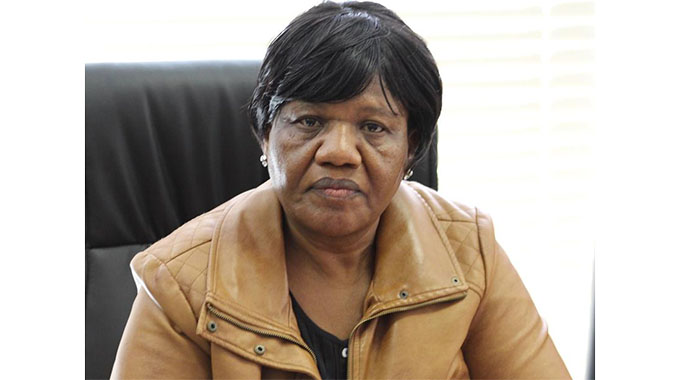Inside Mtengwa’s Scottish wedding

Tafadzwa Zimoyo Senior Lifestyle Writer
A few, if there are any, would dare try and organise their own wedding.
This is because planning a wedding is not only a celebration but a full time job for those who are in the industry.
One such big name in the industry is David Tutera, an American celebrity wedding planner, bridal fashion designer, author and professional speaker.
It is known worldwide that a David Tutera event is more than an event, it is an interactive experience about who you are.
Several celebrities have sought the services of Tutera be it Hollywood actors, socialites or top musicians you name them, they have had their events hosted by him.
But coming closer to home, a week ago wedding enthusiasts marveled at the union of Albert Mtengwa and Regina Dzvova in holy matrimony.
The wedding took place at Hitex Farm just a few minutes’ drive south of the capital Harare.
While there was the usual razzmatazz you find at every other wedding, the décor, the lights, confetti and of course the celebrity among the glitterati.
Some of the local celebrities who thronged the wedding include the likes of Pastor G, Trevor Dongo, Madiz, Tembalami, Sabastian Magacha, Leonard Zhakata as well as the famed Purple Pride Family which Albert is a founding member.
Yes, the Churchill Pipe Band made the wedding special as they played while the groom walked down the aisle.
Added to this, multi-award winning producer MacDonald Chidavaenzi of Eternity Productions curated the entertainment.
However, something that quickly captured the imagination of many were the Scottish Kilts. It is hardly surprising that Albert’s wedding ran under the theme: “Gordon Tartan Scottish Wedding.”
To compliment the theme he decided to bring in the Churchill Pipe Band which has a prestigious history of being one of the first Scottish Band in Africa and Zimbabwe and also one of the first multiracial band in the world.
The groom and his groomsmen were all dressed as Scottish Pied Pipers from head to toe.
Interestingly, there is a rich history about the Scottish Kilts.
Coming to it, the universal symbol for the Scotsman—the tartan kilt. The tailored kilt differs from the phillabeg in that instead of simply being gathered and belted on, the pleats in the kilt are actually sewn down.
The first instance of this was in the military in the 1790s.
These first tailored kilts were box pleated to the line.
There was no tapering, the pleats were sewn down about 5 inches, and the length of the kilt was selvedge to selvedge (about 25”).
The amount of cloth used was between 3.5 and 4 yards.
Tailored kilts for civilian wear soon followed suit, only these were pleated to nothing (i.e. to no particular line or pattern), until about 1820 when they, too, began to be pleated to the line.
The amount of cloth used in the kilt grew to about 5 yards in the mid nineteenth century, due to the pattern of the tartans becoming larger and box pleats becoming more narrow.
In 1853 the Gordon Highlanders became the first regiment to adopt the knife pleat.
By the year 1900 knife pleating had also become acceptable in civilian kilts and the idea of “pleating to sett” (i.e. arranging the pleats so that the pattern of the tartan was unbroken) was becoming popular.
This new form of pleating caused the amount of cloth used in a kilt to grow to six, seven, even eight or more yards of tartan cloth!
There is a myth today that a true kilt should contain 8 yards of cloth — no more, no less.
Any kiltmaker worth his salt would tell you otherwise.
What determines the amount of cloth in your kilt is the size of the repeat of the tartan, and of course the size of the wearer! The average civilian kilt may have anywhere from 6 to 10 yards of cloth.
And recently kilmakers have begun to also offer options that have 4 yards, a much more comfortable choice that hearkens back to when the kilt was worn as part of the daily dress.
Of course the details of the tailored kilt evolved over time. Waistbands, linings, straps and buckles were added as fashions changed.
And what was worn with the kilt changed as well, to reflect the changing fashions of society. We will not delve into such matters as hose, sporrans, bonnets and the like here.
So the Mtengwas’s wedding held on September 25, 2021 was inspired by the traditions of Scottish pipe band.
The couple had been dating for three years before he proposed in the fourth year during which time he had an idea of how his wedding would look like.
“I met her at Methodist Church choir competitions with my outfit Purple Pride Family some years back and I only got to pay lobola (Dowry). We planned our own wedding because we wanted to fully express ourselves.
“We chose the Gordon Tartan Scottish Wedding theme since I have been wearing the Gordon Tartan Kilt for the past 18years at Churchill School where I started piping.
“Interestingly I am still serving as a band tutor, so the pipe band resembles Royalty,” he explained about the theme.
“We then agreed with the bride that the wedding was supposed to be exceptional and something out of the ordinary.”
Outside the dress code another highlight was the cake baked by Cynthia Katurura who is popularly known as “The Cake Lady” while my wife designed the wedding dress from her stable Gina’s Closet and the groomsmen were dressed by Chenah Wear.
Rev Lomberd was the marriage officer while there two masters of ceremonies one for the reception and the other one for the church service.
Phew! What a pied piper of a wedding it was!











Comments